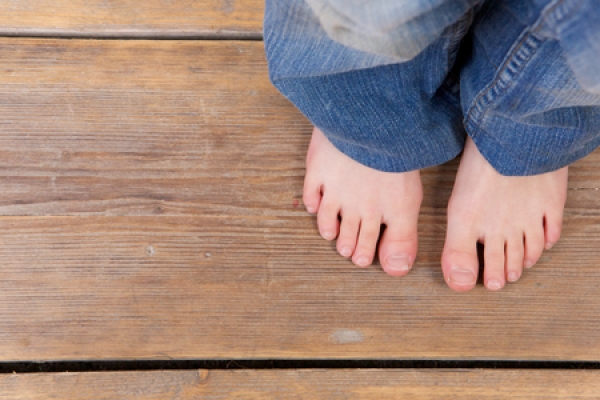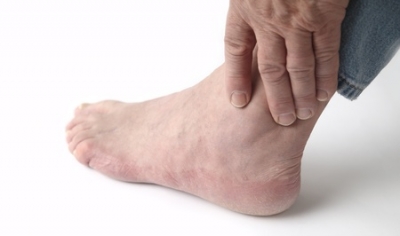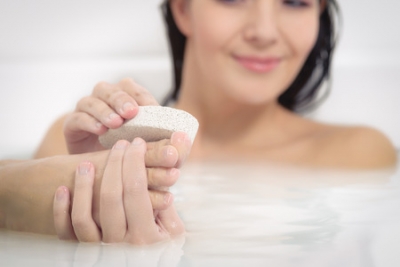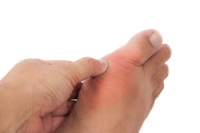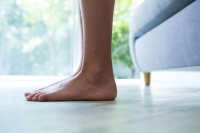Connect With Us
Blogs
Blog
Children categories
At Superior Foot & Ankle Care Center, we treat patients of all ages. Some of our younger patients are not very articulate about foot and ankle pain or discomfort. Children may know that it doesn’t feel good to run but not be able to specifically say that it feels like a rock is pressing into the ball of their foot or that their toenail is sore. That’s when parents have to do a little detective work. See if you notice one or more of these signs that your child may be experiencing a podiatric problem:
- A loss of interest in games and physical activities they normally love. A usually active child who chooses to sit on the sidelines or complains that they feel too tired to play may be masking the fact that his or her feet hurt.
- Your child is always last. Being unable to keep up with their peers in simple outdoor play or more formal sports settings can indicate an improperly functioning foot.
- He’s “running in a funny way.” If you notice your child’s gait has changed, it may be a sign that they are altering the way they move to avoid pain or discomfort. This will often lead to balance issues and an increase in trips and falls.
- Limping or walking on tiptoes. Younger children may be afraid to go to the doctor or not want to take time out from playing, so they keep going, but a change is evident in how they walk and run. That’s when it’s time to examine your child’s feet and see if there are cuts, bruises, swelling, or other potential sources of foot pain. Ingrown toenails, which are particularly common in children, can quickly become swollen and painful but would not be noticeable unless you inspect your child’s feet. Checking children’s feet regularly is a good way to help detect podiatric issues in their earliest stages. If you notice anything unusual, be sure to report it to our podiatrists, Victoria Foley or Dr. Constance Ornelas, so they can diagnose your child’s condition promptly and prescribe the correct treatment. Contact our Long Beach office for an appointment by calling: (562) 420-9800.
Is starting a new fitness plan one of your New Year’s resolutions? At Superior Foot & Ankle Care Center we applaud this initiative, but also add a word of caution. We see too many patients who fail to take the necessary steps to ensure that their new fitness plan is safe. Prevent injuries and get your healthy resolution off to a smart start by taking into consideration the following.
Your Current Condition—do you suffer from any chronic foot or ankle disorders such as flat feet, plantar fasciitis or hammertoes? Our podiatrists, Dr. Victoria Foley or Dr. Constance Ornelas, can help you determine the best type of exercise and footwear to accommodate an existing podiatric condition. In some cases, special padding or even a custom orthotic device may be prescribed to make exercise more comfortable.
Long-term Goals—in order to determine the type of exercise to do, you need to know what your goals are. Do you want to lose weight? Have more strength and endurance? Improve flexibility and balance? Your general physician and exercise professionals can help match your goals to fitness activities and sports that will best achieve them.
Gear—in our opinion, your footwear is the most important piece of equipment for a new fitness program. Be sure that you get the right shoes for your sport and that they fit properly. If the foot doctor has recommended an orthotic, be sure it fits in your sports shoes. Look for socks that are not too bulky and ones that wick moisture away from your skin to prevent athlete’s foot and fungal infections.
Now you’re ready to begin. Start slow and gradually increase the degree of difficulty of your work out. If your feet or ankles hurt from your new exercise plan, contact our Long Beach office for an appointment by calling: (562) 420-9800.
Arthritis is a term that is used to describe over 100 different joint conditions. At Superior Foot & Ankle Care Center we think it’s important for our patients to be informed about arthritic conditions—especially since each of your feet has 33 joints that need to be protected for your foot to function properly.
Although different types of arthritis may have different causes and manifestations, there are some common characteristics. These include:
- Joint pain
- Swelling
- Stiffness
- Limited range of motion
- Redness or heat in a joint
Some of the more common types of arthritis include:
Osteoarthritis—this is the best-known type of arthritis. Also known as “wear and tear” arthritis, it occurs over time as cartilage breaks down with age and use. Osteoarthritis usually comes on gradually and gets worse over time. Being overweight can exacerbate osteoarthritis because of the excess pressure on the joints caused by carrying extra weight.
Rheumatoid arthritis—although rheumatoid arthritis shares the symptom of joint pain with other forms of arthritis, this form of the disease is far more serious in that it is part of a chronic inflammatory system of diseases that can affect various systems of the body including lungs, heart, eyes and nervous system.
Traumatic arthritis—an injury or trauma to a joint such as a bad sprain, fracture or being hit with a heavy object can damage cartilage and lead to arthritis.
Gout—this form of arthritis occurs when uric acid builds up in the joint and then crystallizes, causing severe pain, inflammation and swelling. Gout most often affects the big toe joint and can be triggered by certain foods, such as shellfish, red meat, organ meats, red wine, brandy, and other alcoholic beverages.
Psoriatic arthritis—in some people with the skin condition of psoriasis a form of arthritis may develop as well. Arthritis may be mild and tends to get worse when the skin condition worsens.
With any form of arthritis, early detection and treatment is key to slowing the progression of the disease and managing the symptoms. If you have any signs of joint disease, it’s important that you contact our Long Beach office (562-420-9800) as soon as possible so that one of our podiatrists, Dr. Victoria Foley or Dr. Constance Ornelas can determine the source of your joint discomfort along with the appropriate treatment.
Why are we at Superior Foot & Ankle Care Center focused on preventing weight gain? Your weight and your feet have an intimate relationship. For every pound you lose, you reduce the pressure on your lower extremities by four times that amount. The same is true in reverse when you gain weight. The holidays are a difficult time to stick to healthy eating habits. Below are 7 tips to help you keep the numbers on the scale from going up.
- Take a taste. Many times, when we long for a particular food, a small amount will satisfy if you give it a chance. Instead of five Christmas cookies, have one and wait a while. You may find that one is enough.
- Eat before parties. While you may think refraining from eating will save calories you can use for eating festive foods but, in reality, it usually tricks your brain into thinking you can eat more than you should. Have a small, healthy meal before you go and then eat in moderation at the party.
- Stay active. As hard as it may be during the busy holiday season, try to stick with your regular exercise regimen. If necessary, divide your routine in half and do it in two segments as the day allows.
- Get enough sleep. Studies have shown that people who lack sleep tend to overeat.
- Choose a smaller plate. Use a dessert plate for the main course buffet to automatically reduce portion sizes. Once you’ve finished what’s on the plate, put it in the sink or throw away so that you’re not tempted to go back for seconds.
- Be a hostess helper. Clearing food and doing dishes will give you a chance to talk to people and keep you away from the food table.
- Avoid foods that can trigger attacks. These include red meat, shellfish, brandy, rich sauces, beer, and other alcoholic beverages. If you have never had gout but wake up in the middle of the night after a holiday party with extreme pain in the joint of your big toe, contact our Long Beach office as soon as possible. This may be the sign of a gout attack, and our podiatrists, Dr. Victoria Foley, and Dr. Constance Omelas will want to examine you. To schedule an appointment, call us at (562) 420-9800.
At Superior Foot & Ankle Care Center we want to encourage our patients to be proactive in the health of their feet. There are many ways that you can help prevent foot and ankle disorders.
Below are some basic foot care tips:
- Practice good podiatric hygiene. Wash your feet daily with soap and warm water. Drying feet completely, especially between the toes will help prevent athlete’s foot and other fungal infections.
- Don’t walk barefoot. Even in the comfort of your own home going barefoot increases the risk of puncture wounds from stepping on a sharp object hiding in the carpet or stubbing your toe or foot. In public places, walking with bare feet is an invitation for contagious podiatric conditions such as fungal toenails and
- Always use sunscreen on your feet when you are outside, and feet are exposed. This goes for days when you are out walking in open sandals as well as when you are at the beach or pool.
- Take care of toenails. Keeping toenails trimmed straight across (never with curved edges) and not too short reduces the risk of getting an ingrown toenail.
- Examine your feet periodically. Look for changes in nail or skin color, bruising, swelling, bumps, rashes and redness. Unusual changes can be a sign of a foot problem. If you notice anything concerning, contact our Long Beach office for an Our podiatrists, Dr. Victoria Foley or Dr. Constance Ornelas, will examine your feet and determine if a problem exists, that requires treatment.
- Don’t attempt to treat yourself. “Bathroom surgery” conducted by patients trying to shave corns, or calluses, remove warts or ingrown nails can lead to severe injury and infection. The podiatrist best handles those tasks.
- When in pain, seek treatment. Ignoring foot pain will usually result in condition getting worse. Don’t delay, contact us by calling: (562) 420-9800.
Dear Santa,
In the weeks leading up to the holidays, we have been working extra hard and trying our best to do everything we are asked to do. We have walked the mall looking for the best gifts, stood on line at the post office mailing cards and packages, attended several festivities and been putting in extra hours for house cleaning and cooking. Below is a list of gifts we are requesting:
- A visit to Superior Foot & Ankle Care Center. We’ve been hurting for a while now and the added pressure of the holidays has only increased our discomfort. We know that foot doctors, Dr. Victoria Foley, and Dr. Constance Ornelas will examine us and be able to provide a prompt diagnosis and treatment plan for what’s causing our pain.
- New shoes. We have a few comfy favorites, but honestly, they are getting a little worn out. The backs are stretched, and there is some frayed stitching on the toe that I am afraid is going to cause a trip or fall. In addition, it’s time to ditch some of the high heels and shoes with pointy toes—they are making our toes hurt, and we are worried that wearing them may cause a bunion to develop. We need to be professionally measured too because, over time, foot size can change.
- Professional pedicure. It would be relaxing to soak in a warm bath and then have my nails trimmed and polished in a festive color for the holidays. Of course, that’s only if the salon follows all the proper sanitizing procedures for sterilizing foot baths and nail tools so that we don’t end up with a fungal infection.
- Extra emollient moisturizer. With the heat on all the time, our skin is getting pretty dry. Flakes and itching are annoying enough, but we certainly don’t want to get to the point where cracks are opening in our heels. Thick and rich cream or lotion to put on our feet would be much appreciated. In addition, maybe a pair of fleece socks to put on after the lotion is applied would be great if it’s not too much to ask.
Are your feet trying to tell you something? If you have questions about unusual podiatric symptoms, you are experiencing or want to learn more ways to be proactive in caring for your feet, contact our Long Beach office today by calling: (562) 420-9800.
At Superior Foot & Ankle Care Center, we often see patients with chronic ankle problems such as weakness, instability, and pain, which can be traced back to an old ankle injury that was not treated and rehabilitated promptly. An ankle sprain occurs when the bones twist and ligaments surrounding them are overstretched or even torn. There are various levels of severity of sprains, but one thing they all in common is the need for immediate treatment to facilitate full and proper recovery.
If you suffer an ankle-twisting injury, you should contact our Long Beach office as soon as possible after the injury so that one of our podiatrists, Dr. Victoria Foley or Dr. Constance Ornelas can evaluate the damage. While you wait for your appointment, your first line of treatment is to follow the RICE regimen:
REST—stay off the injured ankle as much as possible. Do not try to walk or bear weight on the foot or you may make the injury worse or even cause a secondary injury to occur.
ICE—ice can help relieve pain and swelling. Do not apply ice directly to your skin. Wrap an ice pack in a thin towel and apply to the injured ankle for 20 minutes at a time with at least 40 minutes off between icings.
COMPRESSION—wrapping the injured ankle in a compression bandage can help support the ankle and limit motion. It may also reduce swelling. Make sure the wrap is not too tight. There should not be swelling occurring above or below the bandaged area.
ELEVATION—keep the ankle raised or propped up on pillows to a level that is slightly above your heart. This will reduce swelling.
Once the foot and ankle surgeon has examined your ankle, the best treatment plan for your injury can be determined. It may include physical therapy to retrain the ligaments and strengthen surrounding muscles. In the case of a severe sprain, surgery may be needed to repair the damage. Don’t delay if you have suffered a sprain. Contact us by calling: (562) 420-9800.
Tis the season for cocktail parties, festive dinners, celebratory eating and—gout. At Superior Foot & Ankle Care Center, we expect to see more patients coming to us with gout at this time of year. We’ll often hear how after a holiday party they went home to bed only to wake up in the middle of the night with severe pain in their big toe. Although the foot was fine when they went to sleep, when they awoke in pain, they noticed that it was now swollen, red and hot. These are symptoms of a classic gout attack scenario.
The connection between feasting and gout is that there are several foods frequently found on holiday menus—red meat, shellfish, rich sauces, red wine, beer, and brandy–that are high in a chemical known as purines. Purines are also found in the body. When they break down, they produce uric acid. When there is an overabundance of uric acid in the body, it builds up in the joints where it can crystallize and bring on a gout attack.
Who’s at Risk?
Of course, not everyone who eats a slice of rib roast or has a glass of red wine gets gout. There are some patients whose bodies overproduce purines or have difficulty eliminating. They are therefore more sensitive to new purines entering into the body. Men aged 40-60 are the most frequent victims of gout attacks. In addition to foods, there are other factors that can increase the likelihood of gout, including:
- Heredity
- Obesity
- Stress
- Surgery
- Chemotherapy
- High blood pressure
- Diabetes
- Certain medications and vitamins
If you have suffered what you think is a gout attack, you’ll want to make an appointment at our Long Beach office as soon as possible. Our podiatrists, Dr. Victoria Foley, and Dr. Constance Ornelas will examine your foot and get a medical history from you. In addition, the foot doctor may order laboratory tests or x-rays to confirm a gout diagnosis. In the initial stages, the podiatrist may prescribe medication to relieve gout symptoms and recommend that you drink plenty of fluids and keep your foot elevated as much as possible. If gout proves to be a recurring problem, prescribing maintenance medication may be an option. To learn more, contact us by calling: (562) 420-9800.
It’s that time of year again—flyers are flooding your mailbox and ads on television are getting you primed for holiday bargains. At Superior Foot & Ankle Care Center we want to make sure that the money you save on holiday shopping isn’t at the expense of your feet and ankles. Your best defense against foot pain and injury is the shoes you wear. Below are 6 tips for choosing the best shoes for long shopping days:
- Go for fit first. Did you know that some studies estimate as many as 90% of people are wearing shoes that are too small for their feet? The longer you’re on your feet, the more your feet swell. If you are starting with shoes that are too small, your shopping day is going to be shortened because your feet will begin to hurt after just a couple of hours of power walking from store to store. It’s a good idea to get your feet professionally measured to ensure the proper size.
- Don’t wear a new pair of shoes. Even if they felt comfortable in the store, a new pair of shoes should be worn for short periods of time at first to make sure there is no rubbing or friction. A marathon shopping day is not the time to try them out. Wear a pair that you know to be comfortable.
- Be light on your feet. Choose a lighter weight pair of shoes for a long day of shopping. The heavier the shoes, the faster your feet will get tired out wearing them.
- Don’t forget your orthotics. If the foot doctor has prescribed a custom orthotic device to be worn in your shoes, it’s to keep your feet properly positioned to help correct a biomechanical problem and avoid foot pain.
- Choose a thick sole. Shock absorption is key to preventing foot pain. Gel insoles and cushioned midsoles can increase comfort by cushioning your steps to protect your feet.
- Prevent injury. High top shoes with solid ankle support and shoes with a grooved tread can help prevent slips and ankle twisting injuries which could bring bargain shopping to a screeching halt. If you do sustain an injury, don’t wait. Contact our Long Beach office (562-420-9800) so that our podiatrists, Dr. Victoria Foley and Dr. Constance Omelas can examine your feet and determine the extent of your injury and the appropriate treatment.
At Superior Foot & Ankle Care Center we see patients whose symptoms don’t immediately point to the cause of the problem. Flatfeet can be one of those conditions. Patients with flatfeet may experience one or all of the following symptoms:
- Pain in the foot, ankle, heel and/or lower leg
- Lack of flexibility in the foot
- General aching or fatigue in the foot or leg
- Swelling in the midfoot area
- Overpronation
- Shin splints
- Lower back, knee or hip pain
Finding the Cause
There are several types of flatfeet. They share one defining characteristic: a partial or total collapse or loss of the arch of the foot. Some possible causes of flatfeet include:
- Heredity
- Abnormal development of the arch during childhood
- Trauma or injury
- A gradual loss of arch over time due to aging, weight gain or medical conditions such as arthritis
This deformity may be present in varying degrees and therefore result in varying severity and kinds of symptoms. If you are experiencing any of the above symptoms, it’s a good idea to make an appointment at our Long Beach office so that our podiatrists, Dr. Victoria Foley and Dr. Constance Omelas can examine your foot.
To diagnose flatfoot, the foot and ankle surgeon will examine your foot and observe how the arch looks when you are standing and sitting. Most likely x-rays will be ordered to determine the severity of the deformity.
Treatment Options
How to best treat flatfoot will depend on how advanced your condition is and the symptoms you are experiencing. Some patients with flatfoot experience no symptoms and the foot doctor may just advise you on ways to prevent worsening of the flatfoot and what you can expect in the future. For those with symptoms, a number of non-invasive treatments exist including modifying your footwear, using custom orthotics, and physical therapy.
If you believe you may have flatfeet, contact us for an evaluation today by calling: (562) 420-9800.
More...
At Superior Foot & Ankle Care Center we treat many patients with diabetes. November is American Diabetes Month and a good opportunity for us to go over some care tactics for patients with this disease. Below are some key areas to focus on:
Your Daily Care Routine
Of course, a good foot care regimen is important for everyone, but for a diabetic patient, it is even more critical. Your daily care plan should include:
- Washing your feet with warm water and a mild soap
- Drying your feet completely, with extra care to ensure that the area between your toes is completely dry (this will help prevent fungal infections)
- Checking toenails for jagged edges. Always trim nails straight across with no rounded edges. Do not cut too short and never cut the corners.
- Inspect your feet from every angle. Look for changes in skin and nail color, rashes, flaking skin, bruises, swelling, any scratches or cuts. Report anything that concerns you to our podiatrists, Dr. Victoria Foley and Dr. Constance Omelas to evaluate. It’s always better to be over cautious!
Your Shoes and Socks
Shoes should have wide, roomy toe boxes and be made of soft, flexible materials. Avoid heels higher than 2 inches. When buying new shoes, have your foot professionally measured. Run your hand around the inside of the shoe to make sure there are no rough spots or loose stitching. Wear new shoes for only a few hours at a time and examine your feet after wearing to make sure there are no red spots or blisters forming.
Socks should be the type that wick moisture away from your feet. If you sweat excessively, change your socks multiple times throughout the day. Avoid socks that have overly tight elastic on the tops and those with seams across the toes.
Your Lifestyle Choices
Eating an appropriate diet to help manage your blood sugar is essential. A regular exercise routine will help you maintain a good weight and also improve circulation. Don’t smoke because it has a negative impact on circulation. Follow all of your doctor’s recommendations for keeping your diabetes under control.
If you have questions or concerns about diabetes and your feet, contact our Long Beach office today by calling: (562) 420-9800.
Are you familiar with the condition known as Haglund’s Deformity? At Superior Foot & Ankle Care Center we find that patients have some misconceptions about this disorder which affects the heel. Below are some facts to better familiarize you with this foot problem:
FACT: Haglund’s Deformity is a bony enlargement that develops on the back of your heel. Other signs of this condition are swelling and redness around the enlargement and pain where the Achilles tendon attaches to your heel bone.
FACT: Another name for Haglund’s Deformity is “pump bump.” That’s because pumps with their stiff backs hit the bony enlargement and irritate it, resulting in pain when walking and wearing shoes.
FACT: More women than men get Haglund’s Deformity.
FACT: Although pumps aggravate the bony enlargement, they are not the cause of Haglund’s Deformity. This condition is the result of structural defects, including overly high arches, the tendency to walk on the outside of your heel or a tight Achilles tendon.
FACT: Haglund’s Deformity can only be corrected by surgery. There are, however, a number of conservative measures that can be used to relieve pain and decrease pressure on the bony protrusion. After our podiatrists, Dr. Victoria Foley and Dr. Constance Omelas, examine your heel and order x-rays or other imaging studies to confirm a diagnosis of Haglund’s Deformity a treatment plan can be determined.
FACT: Treatment for pump bump will depend in part on the cause. Heel pads, for example, may be recommended if the cause is high arches or stretching exercises for your calf if the source of the condition is a tight Achilles tendon. Custom orthotics can also be used to correct abnormal foot motion.
FACT: Pain from pump bump can be reduced by icing the bony enlargement. Apply an ice pack wrapped in a thin towel (do not apply ice directly to the skin) for 20 minutes at a time with a 40-minute break in between.
FACT: You can help prevent inflammation of the bony growth by wearing shoes with open backs or those made of soft materials. You should also avoid running on hard surfaces and up hills.
If you have additional concerns about Haglund’s Deformity, contact our Long Beach office by calling: (562) 420-9800.
Are you experiencing acute pain in the ball of your foot? Is the pain more noticeable with increased activity or when you are walking barefoot? Have you noticed a callus beginning to form in the spot where the pain is? If you answered yes to one or more of these questions, you may be suffering from a condition we treat at Superior Foot & Ankle Care Center known as metatarsalgia.
Your metatarsal bones run down the middle of your foot from your ankle to each of your 5 toes. When the nerves between two of the metatarsals become inflamed, it causes pain, and this is known as metatarsalgia.
What’s Behind the Pain
Basically, metatarsalgia occurs when there is either too much pressure or an uneven pressure applied to the metatarsals. This can have a wide range of causes, however, including:
- Overpronation
- Arthritis
- Foot injuries
- Aging
- Weight gain
- Overuse from weight-bearing sports such as running
- Foot deformities
- Morton’s neuroma
- Poorly fitting footwear
- Standing for long periods on hard surfaces
Getting Relief
The treatment for metatarsalgia will depend on the cause. The first step is to have our podiatrists, Dr. Victoria Foley and Dr. Constance Omelas examine your feet. The foot doctor will also want to get your medical history and ask about your recent activities. Once the reason behind the metatarsalgia has been found, the foot doctor may recommend one or more of the following:
- Icing the area and taking over-the-counter anti-inflammatory medications to relieve pain and inflammation
- Resting your feet from sports and physical activities that aggravate the ball of the foot
- Custom orthotics to correct overpronation or other biomechanical issues
- Wearing properly fitting, supportive shoes
- Losing weight if you are overweight to reduce pressure on your feet
If you are experiencing pain or pressure in the ball of your foot, contact our Long Beach office today for an appointment by calling: (562) 420-9800.
It’s the time of year for fright fests, haunted houses and all kinds of scary attractions, but at Superior Foot & Ankle Care Center we believe the podiatrist’s office shouldn’t be one of them! Many times, patients may get a diagnosis that sounds scary. In most cases, however, the name of a disorder may sound more frightening than it is. The job of our podiatrists, Dr. Victoria Foley and Dr. Constance Omelas is to make sure you understand a diagnosis and the treatment recommended for it. Your job as a patient is to ask questions until you feel confident that you comprehend your condition and treatment plan. Below are a few foot problems that illustrate our point.
Xerosis: while this may sound like a condition common to an ancient Greek god, it’s actually a term to describe very dry skin. Dry air, showering too frequently with very hot water or the soap you are using may all be the underlying cause. In some cases, dry skin can be a symptom of a systemic disorder. Usually, however, applying a super-rich moisturizer to your feet several times a day will eliminate xerosis.
Ganglions: you may be a little frightened when you start to experience numbness, tingling and pain in your feet for no apparent reason. Oftentimes, however, these symptoms are caused by small fluid-filled sacs that occur in the tendons or joints on the top of the feet or ankles. Repetitive stress to tendon linings and joints and shoes that constrict your feet are frequently the reason behind ganglions.
Brachymetatarsia: no, it’s not a pre-historic dinosaur. This term describes a defect in the growth of a toe bone that results in one of the metatarsals being shorter than the rest of the toe bones. It will commonly be seen in both feet. In some cases, this condition will not cause pain or discomfort, but it can affect balance so careful shoe selection will be necessary. For other patients, surgical remediation may be necessary.
Don’t hesitate seeking evaluation of foot or ankle symptoms. Putting off treatment is when foot conditions can truly become scary. Contact our Long Beach office today for an appointment by calling: (562) 420-9800.

